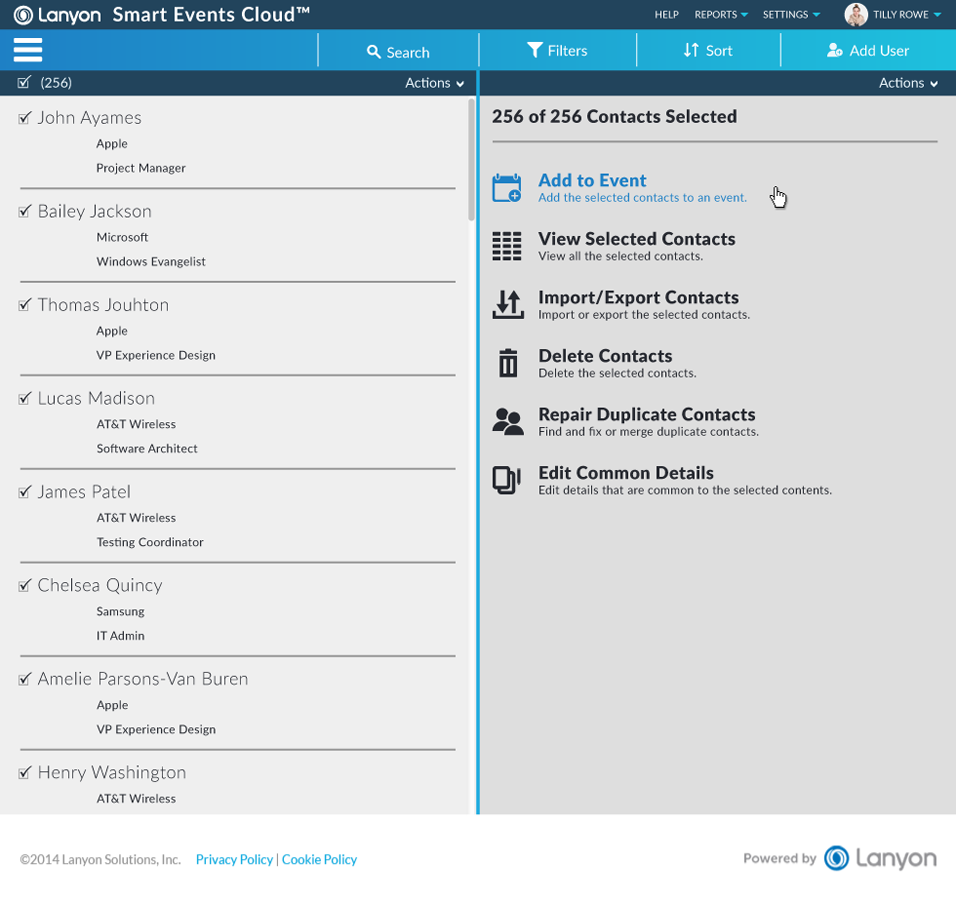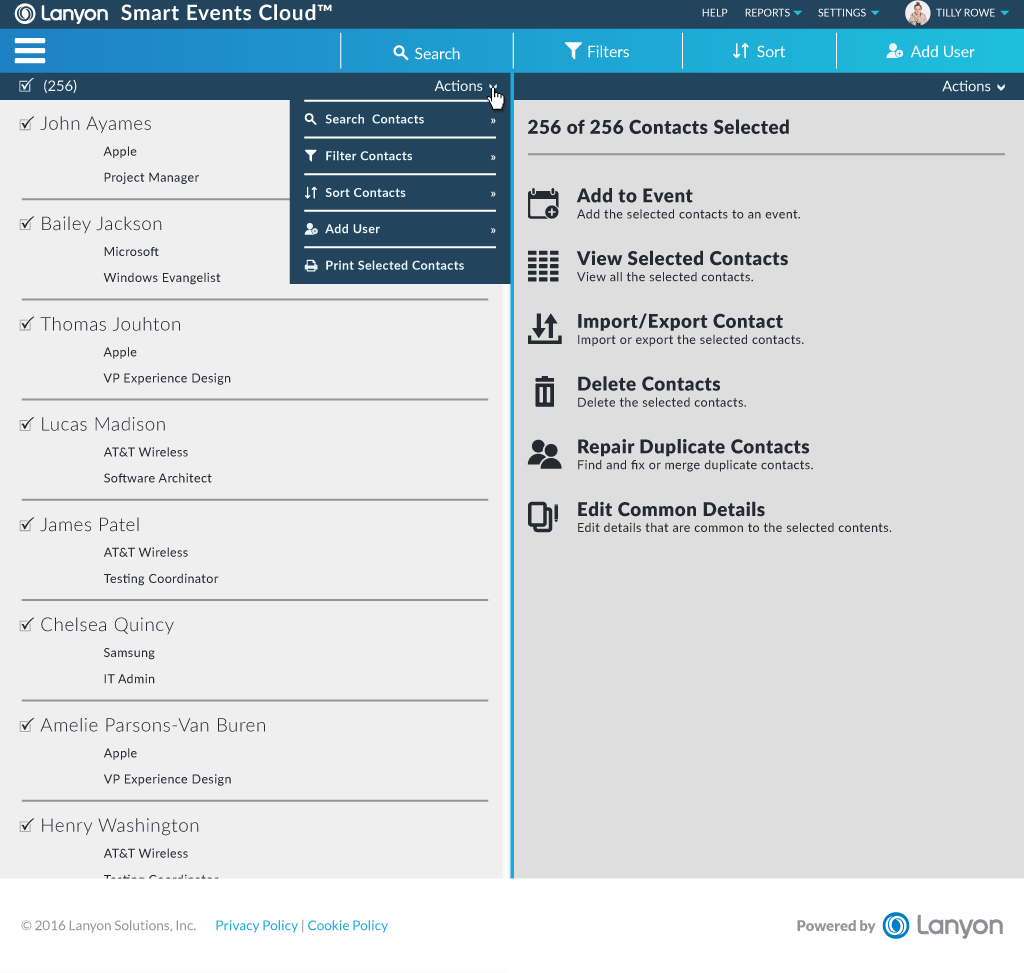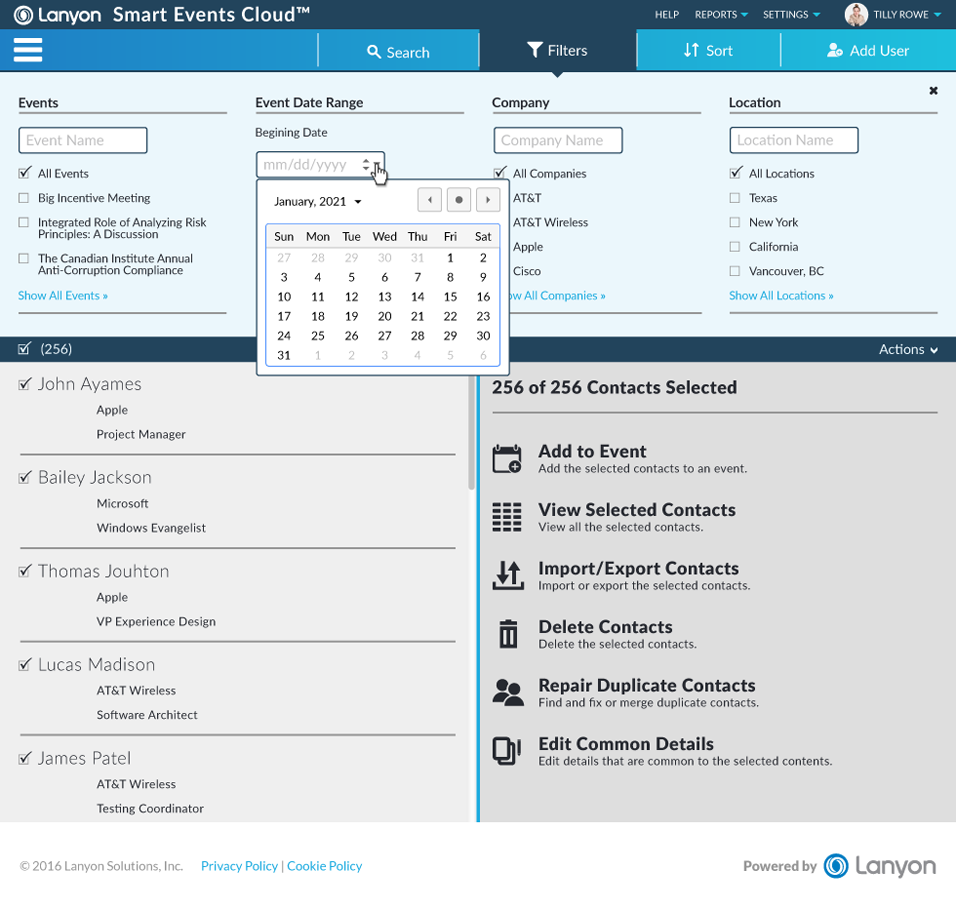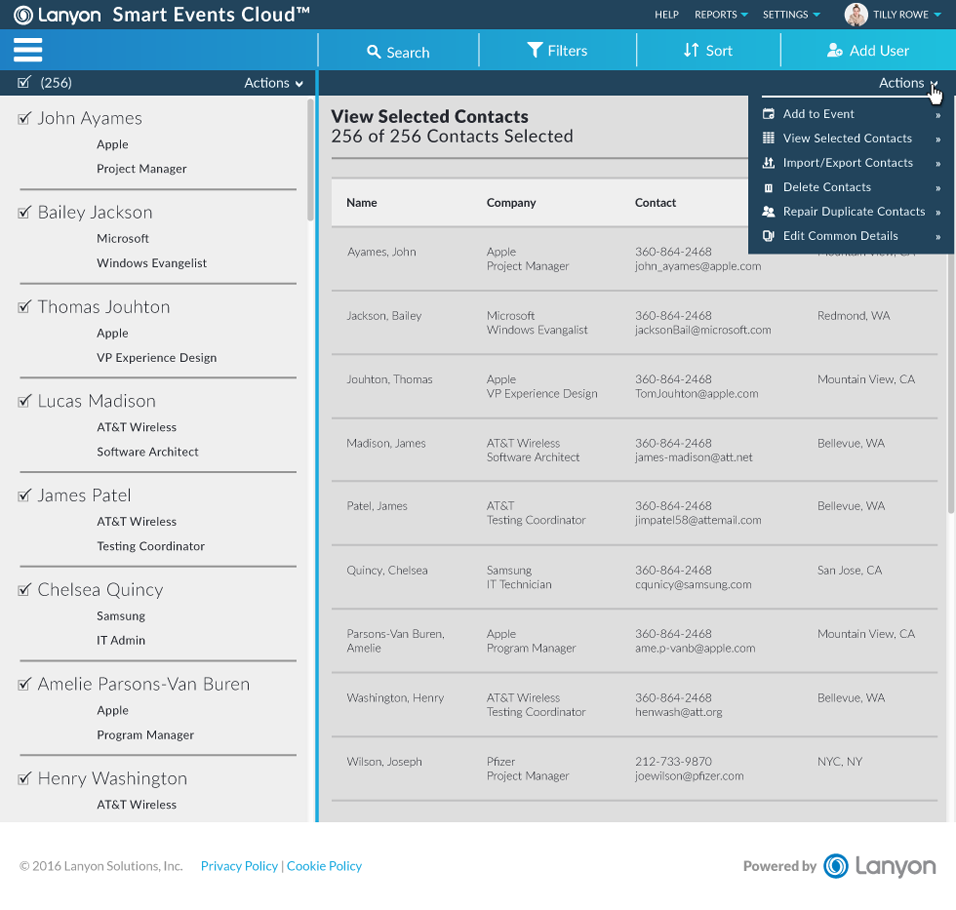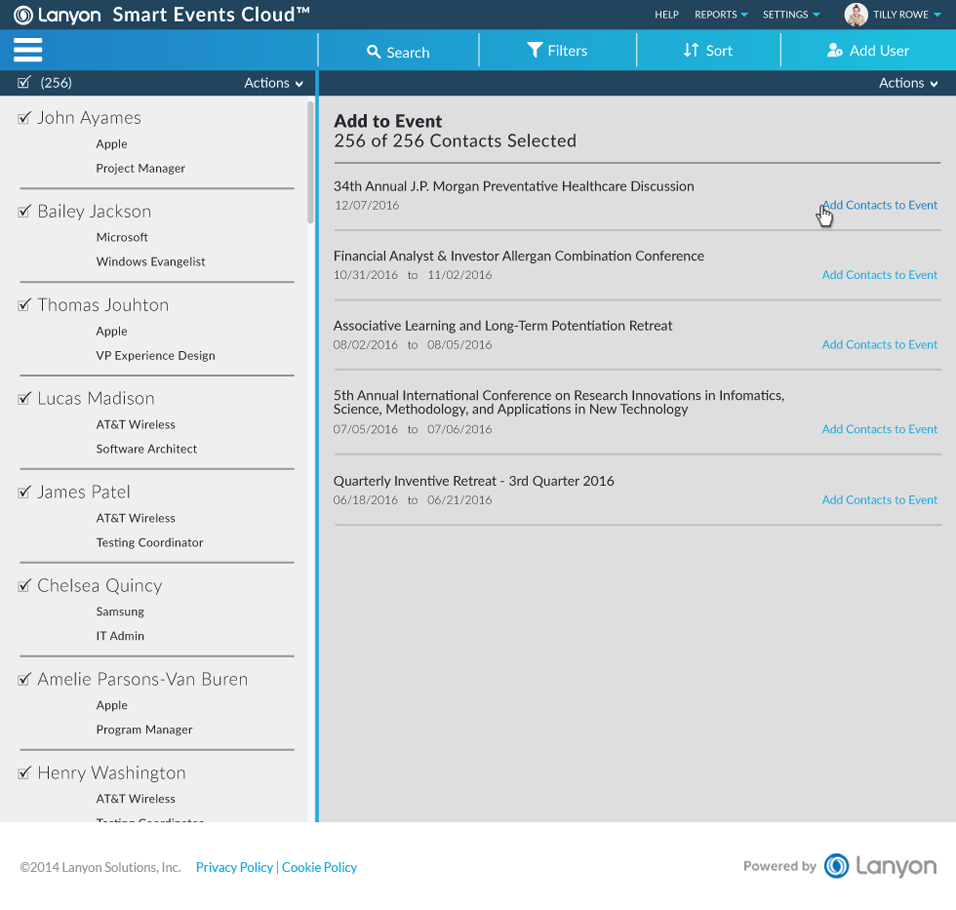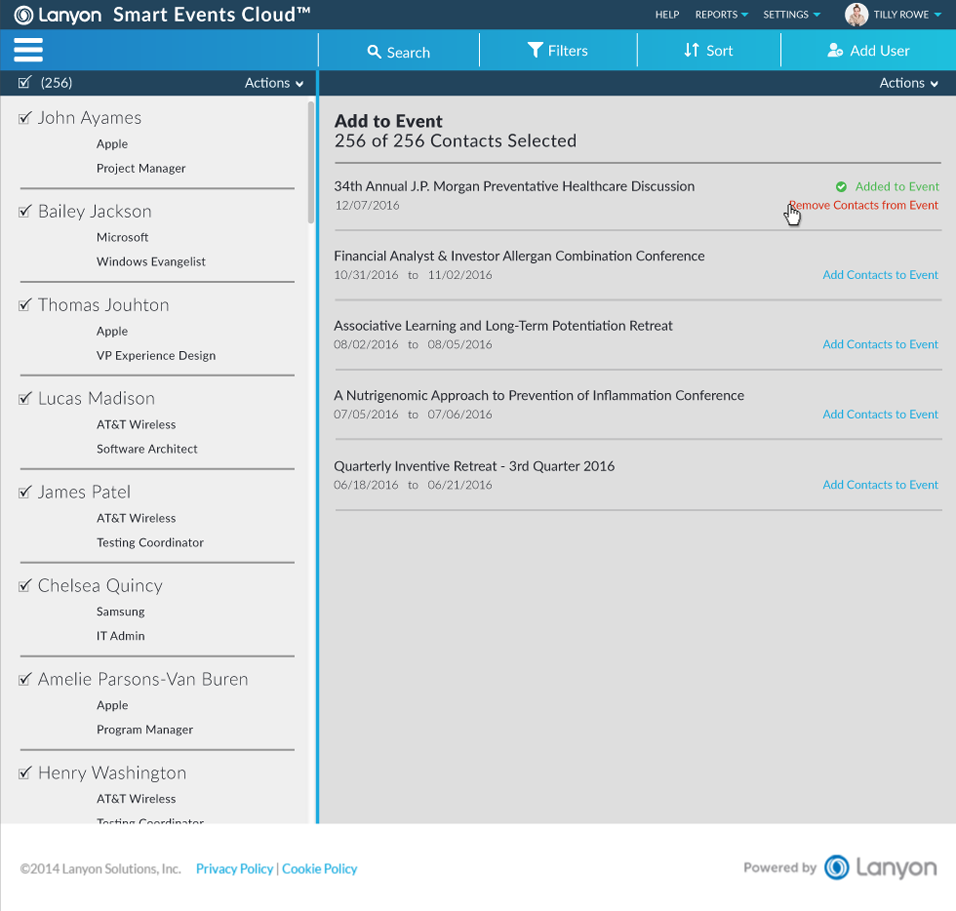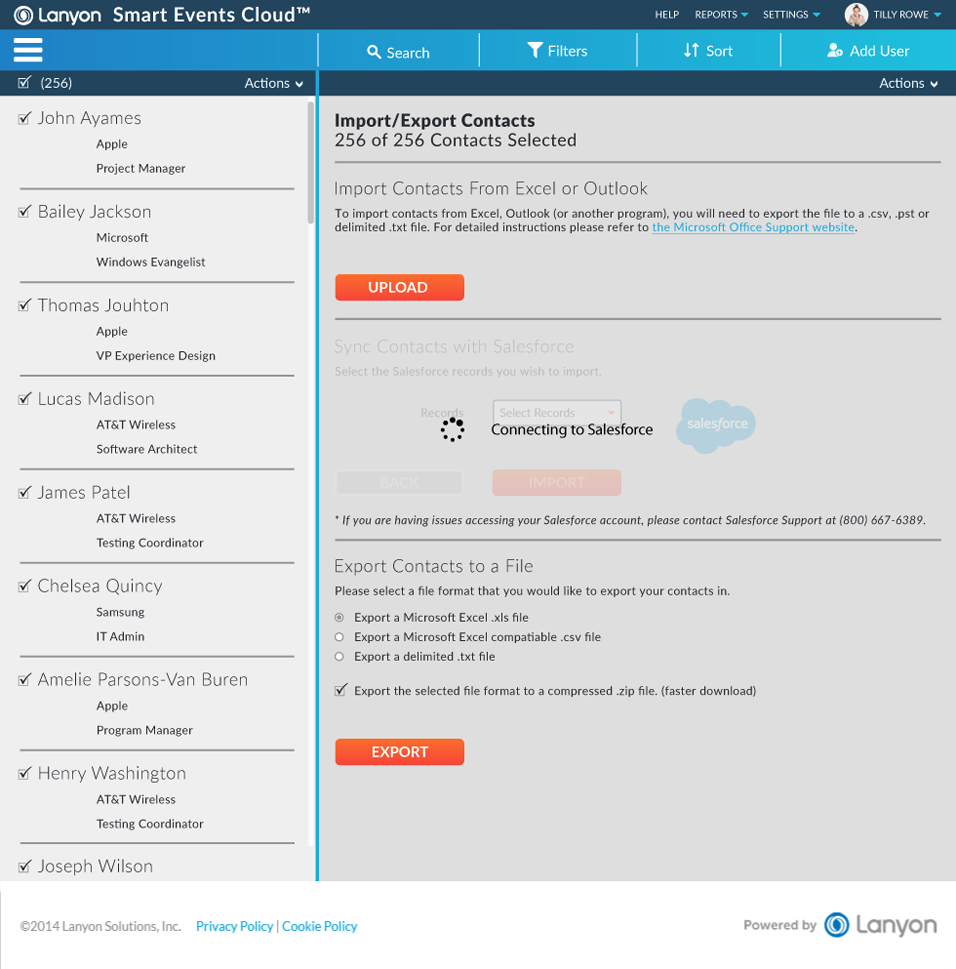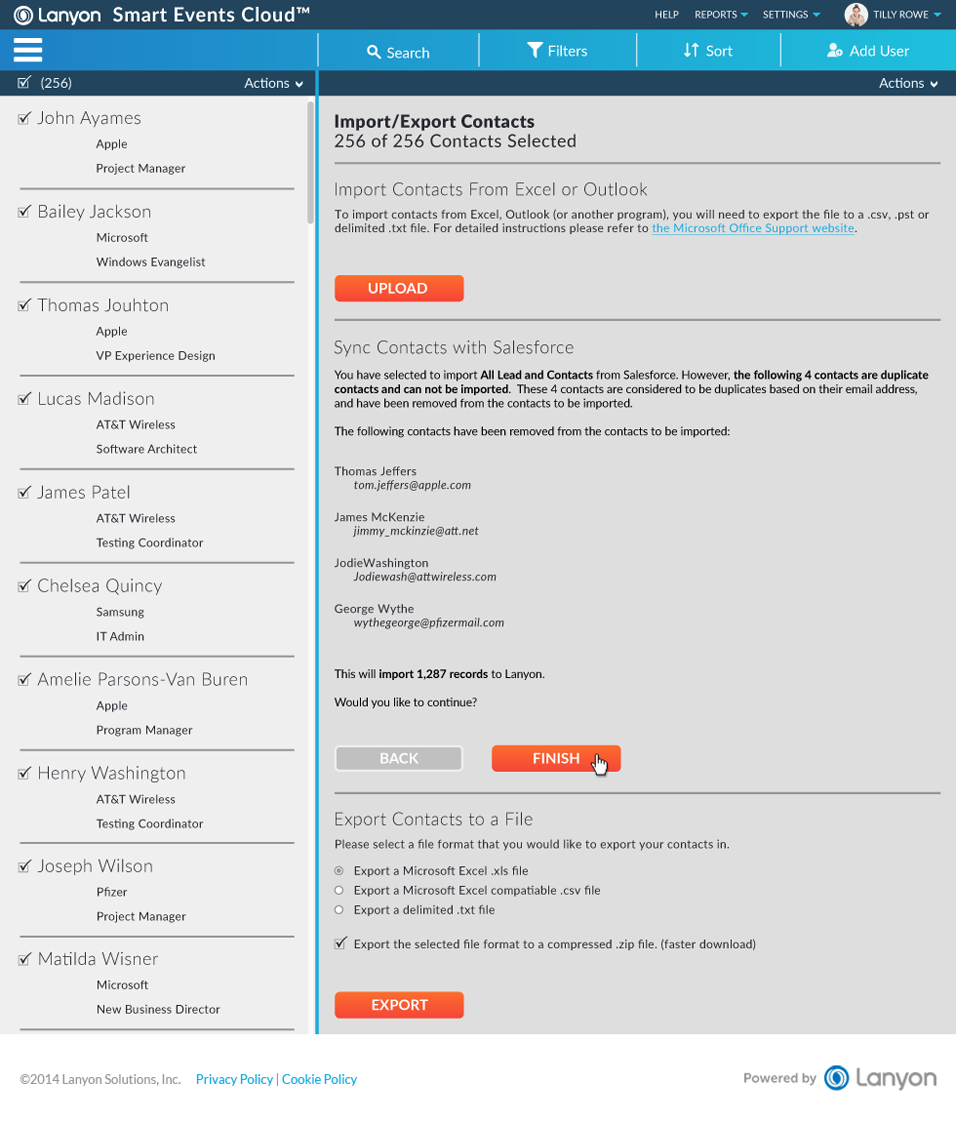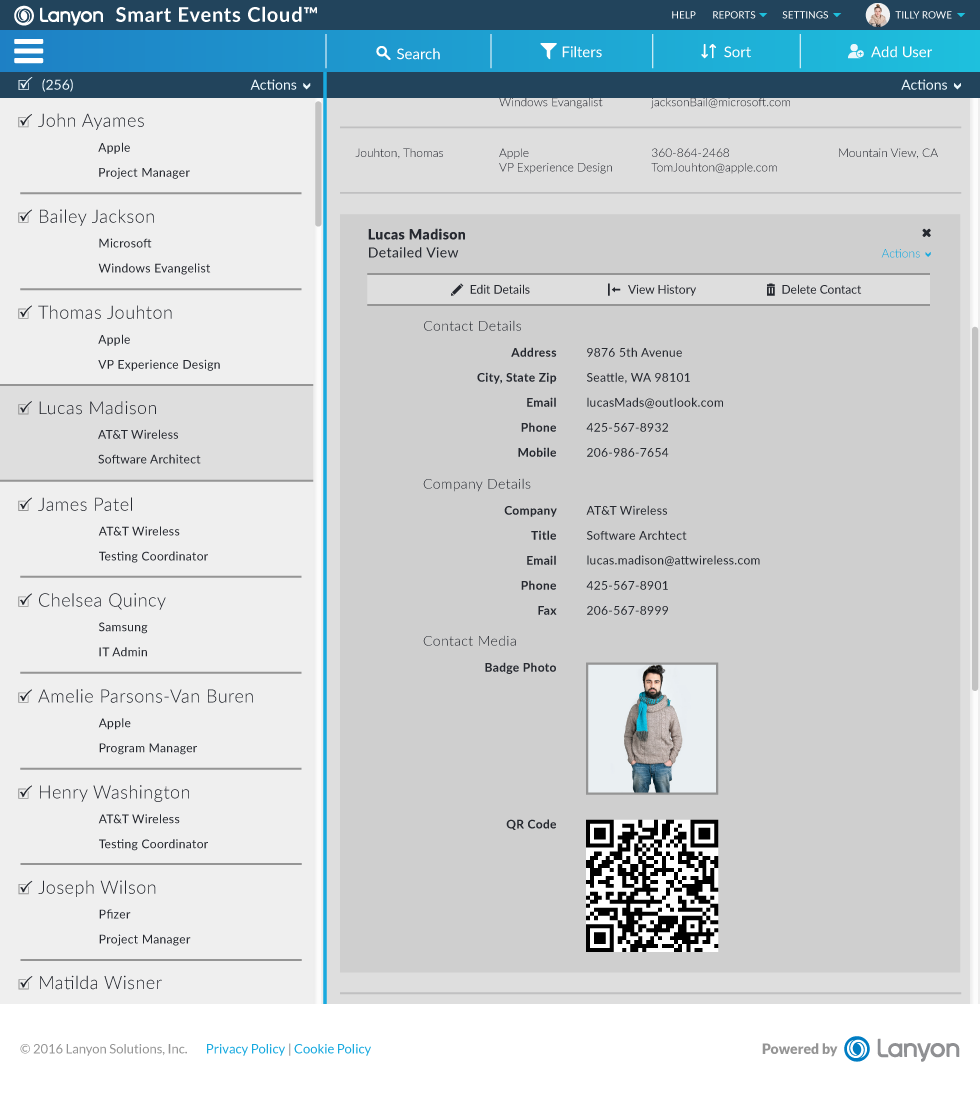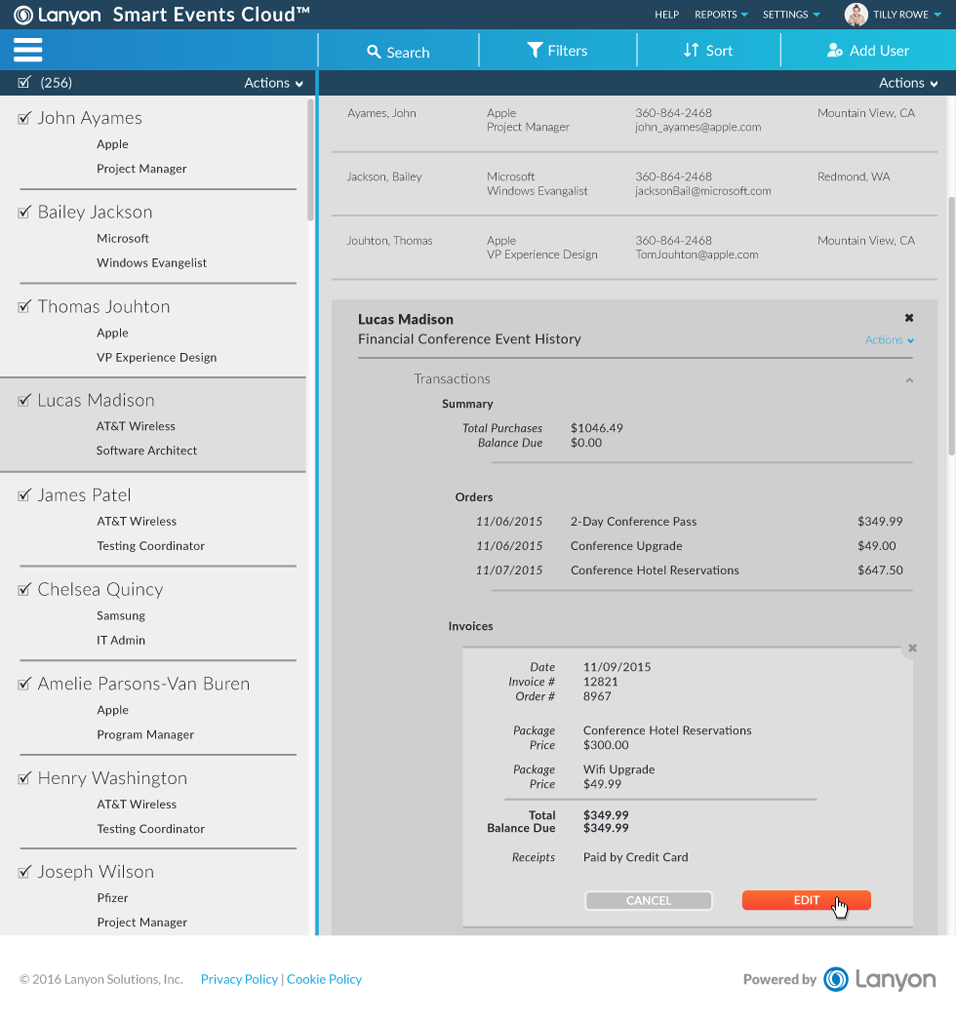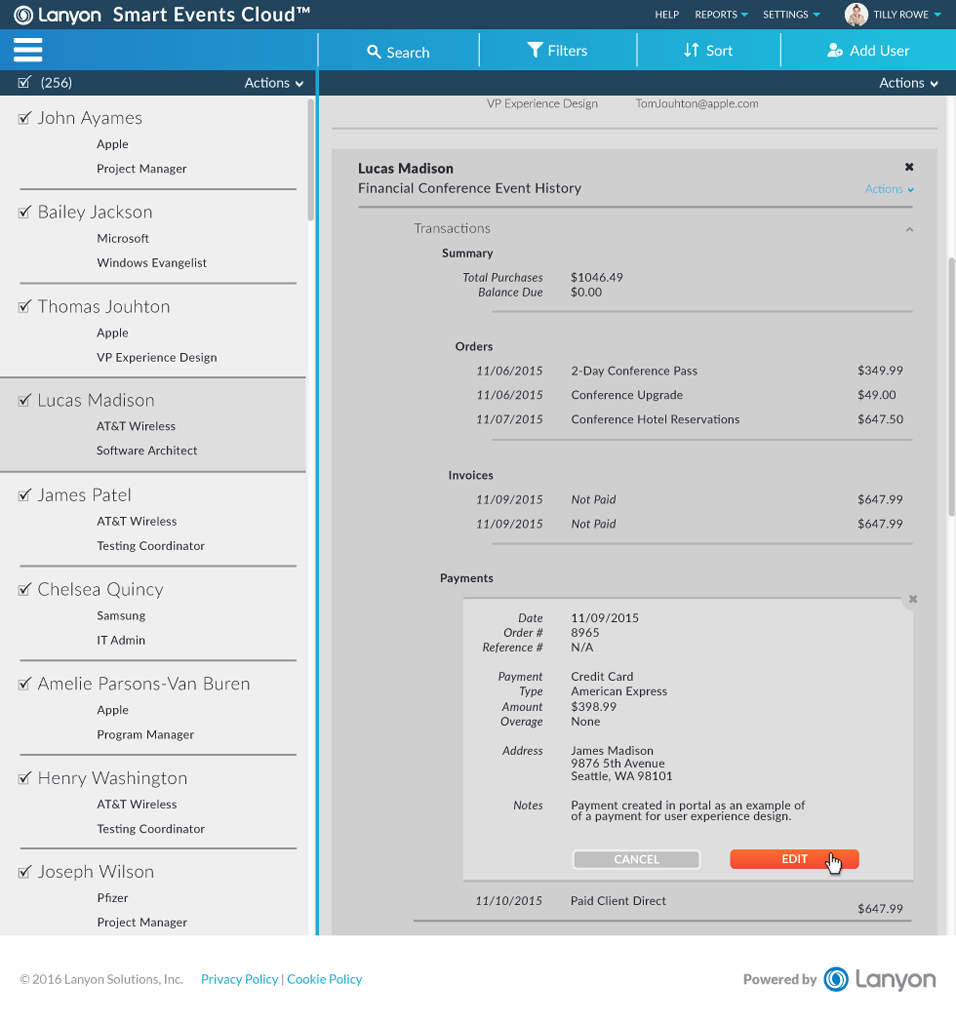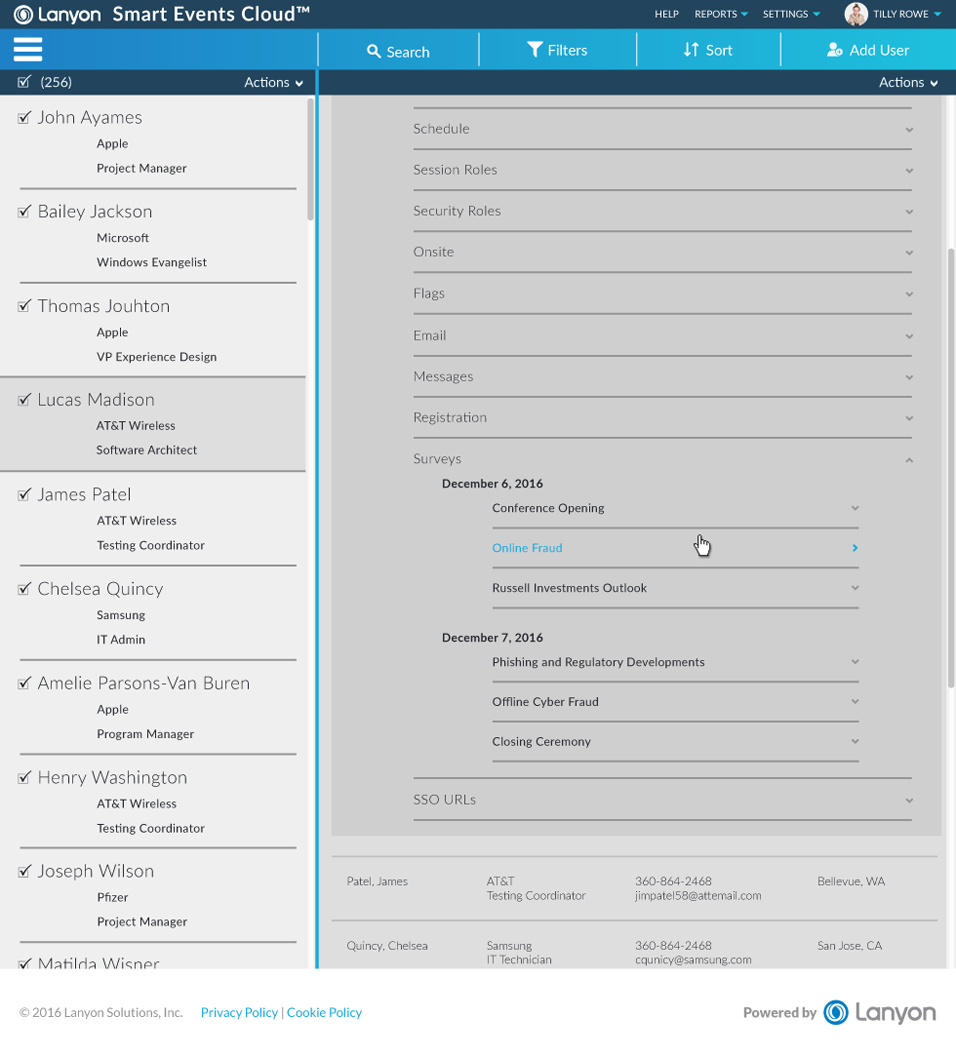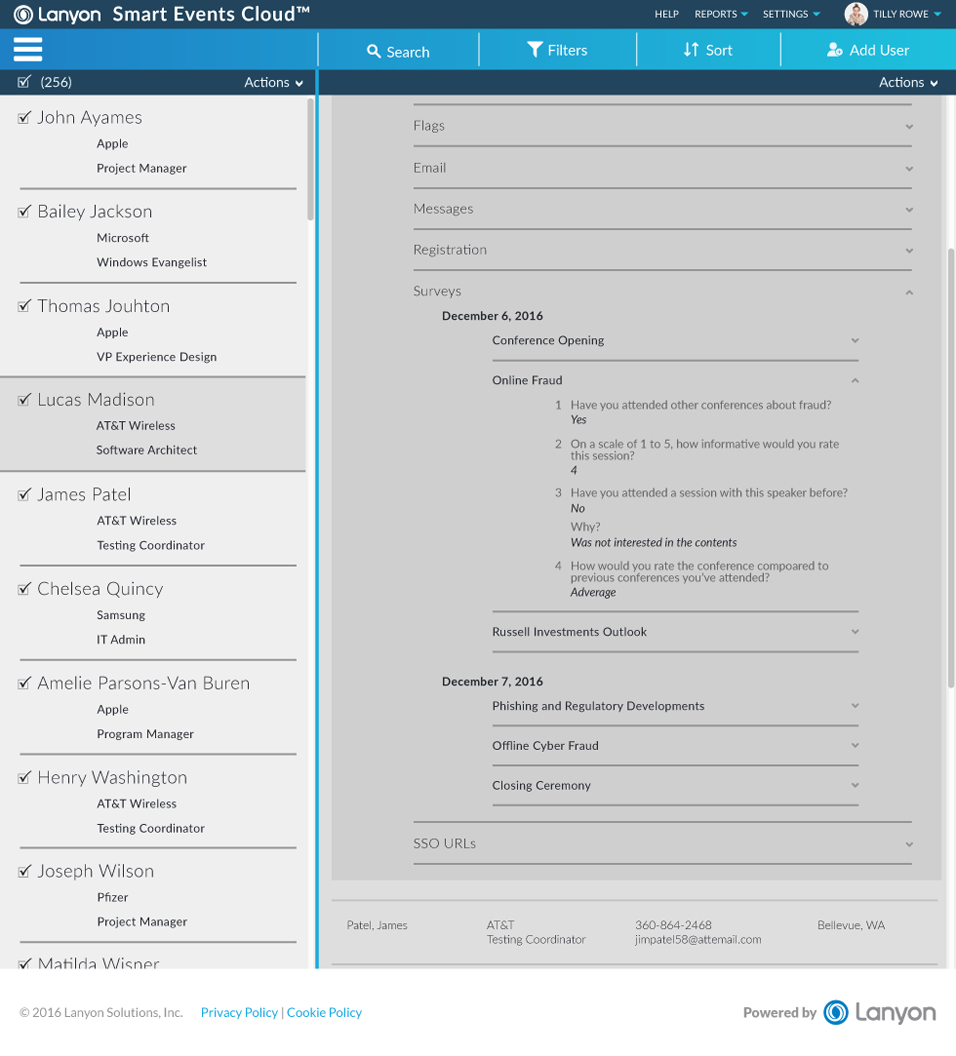Lanyon: CRM Case Study
Lanyon's Customer Relationship Management system relied on multiple products and was difficult to use. I designed a robust, integrated, research-backed and user-tested CRM system.
Project
Customer Relationship Management System
Client
Lanyon
Role
Product design, user experience, architecture, visual design
Discovery
The project focused on the creation of a robust customer relationship management (CRM) system that event planners could use to manage interactions with attendees, speakers, exhibitors, sponsors and VIPs.
I began discovery by meeting with Lanyon's RegOnline product team. The team included engineers, business analysts, subject matter experts and a product manager, as well as a UX strategist and Lanyon's CTO. I extracted information about Lanyon's business objectives, the state of the project, and the problems that led to the need for a new system. Through these discussions I also gained an understanding of the company's working process. I focused on design, development and methodology.
Next, ethnographic and contextual interviews revealed that event planners were using multiple Lanyon products and external desktop applications to perform CRM tasks. They were frustrated by complex and awkward workflows, and sought work-arounds to alleviate the pain points they encountered. These interviews revealed the shortcomings of the existing workflow and gave me insight into potential solutions early on.
I noted was that there were multiple event planner user-types, each with different goals and different ways of engaging with customers. This meant that requirements for one type of event planner were not necessarily the same as for another. The solution would need to cover all types.
One of the most important findings was that event planners were having difficulty performing even the most basic relationship management tasks. For example, to import event attendees, event planners had to export a filtered list from Salesforce, bring it into Excel and delete the fields that would not import into Lanyon's system. They then imported the Excel file into RegOnline, and manually reviewed each record to merge or delete duplicates.
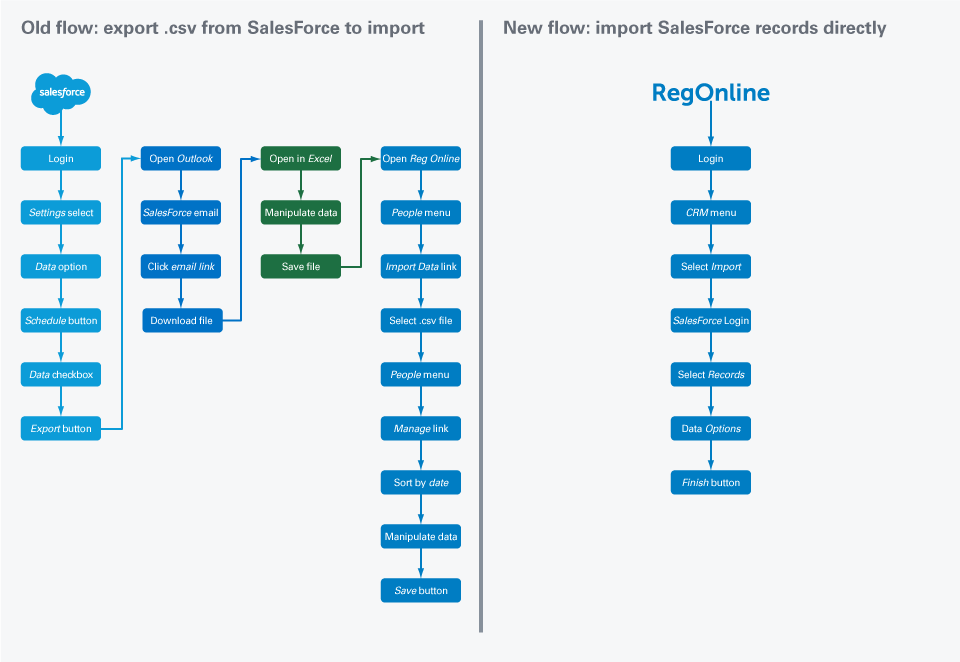
Challenges
Lanyon had a history of designing for its existing system. People were unused to the development of a completely new product. Because of that, and because of the variety of stakeholders involved, I faced situations where some groups responded by describing a solution, rather than focusing on capturing and defining a requirement, or by giving undue weight to opinions over facts.
This was a high-level and visible project, with much interest from other teams and business leads. By sharing journey flows, architecture, wireframes and visual designs on the team's Slack channel, I brought visibility and encouraged stakeholders to arrange for explanations of design rationale, logic and user testing findings. This was helpful for the iterative design approach to the solution.
I worked closely with the engineers, product manager and UX strategist. Together we were able to focus on design reasoning and championing the user. Working with a common vision allowed our voice to be heard when it mattered.
The Process
The process for this project involved liaising with the engineers and the product manager to see if any of the proposed functionality already existed in RegOnline. It also involved checking with the engineers to see if they could envisage front-end or micro-services issues in the design. This working practice was mutual and organic – from my using pen and paper to sketch ideas and eventual solutions, to sharing work-in-progress with engineers, as well as consulting with them when development issues arose.
To design a more streamlined process for interactions with Salesforce, I researched the Salesforce API, and created a system where the event planners could log into their Salesforce account directly from the CRM system. My design allowed them to import files with a single click. The CRM system would then automatically merge or delete duplicate records and save them.
The work was iterative by nature and the development of the project ran in Agile. For this project, design preceded development. I designed for the final state, but I intentionally allowed for graceful degradation. This meant that the design could be simplified for MVP if necessary.
Amigos sessions proved invaluable for collectively solving development problems that arose around suggested design solutions. Bringing designers and developers together also allowed us to quickly formulate alternative solutions to issues caused by last-minute scope creep, changes to the minimum marketable product (MMP) and back-end issues with micro-services.
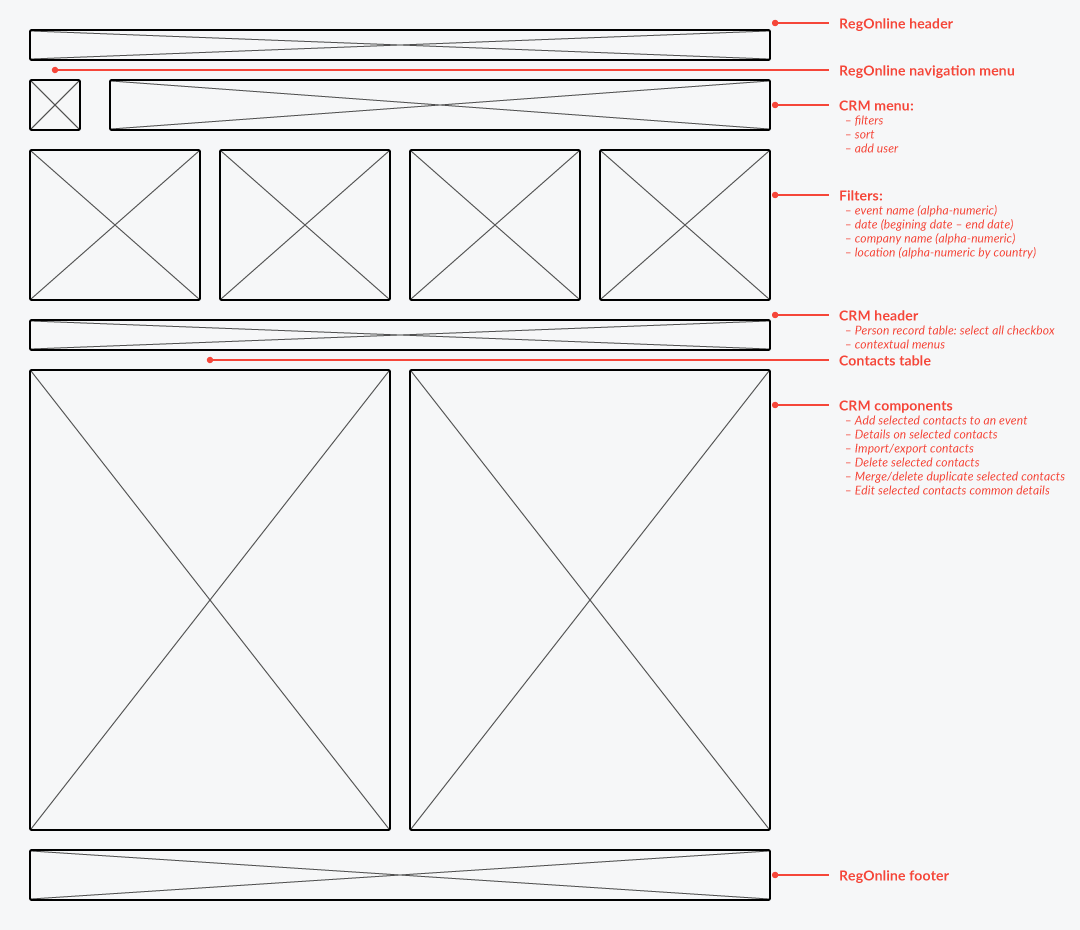
Outcome
The UX-led design process resulted in a research-backed, expertly designed and user-tested product made to be rolled to select clients initially, then to all RegOnline users.
The CRM tested well with no serious issues. The product design was effective and allowed all user types to quickly locate whichever path they needed.
The design and design patterns I established were universal and product-agnostic. They could be rolled out beyond RegOnline and integrated into any Lanyon event product requiring CRM functionality. The new design solution also addressed the wider business need to free-up event planner capacity by decreasing the time spent performing CRM tasks. The obstacles uncovered during user research were no longer devouring valuable time and energy. A task that had taken event planners up to half a day to complete now took them five minutes.
This user-centric CRM system provided obvious value to Lanyon and its clients. I enjoyed this complex project on a personal and professional level. With the design completed and the client happy, I was ready to take on a new challenge.
Design Thinking
Early concepts begin with pen and paper.
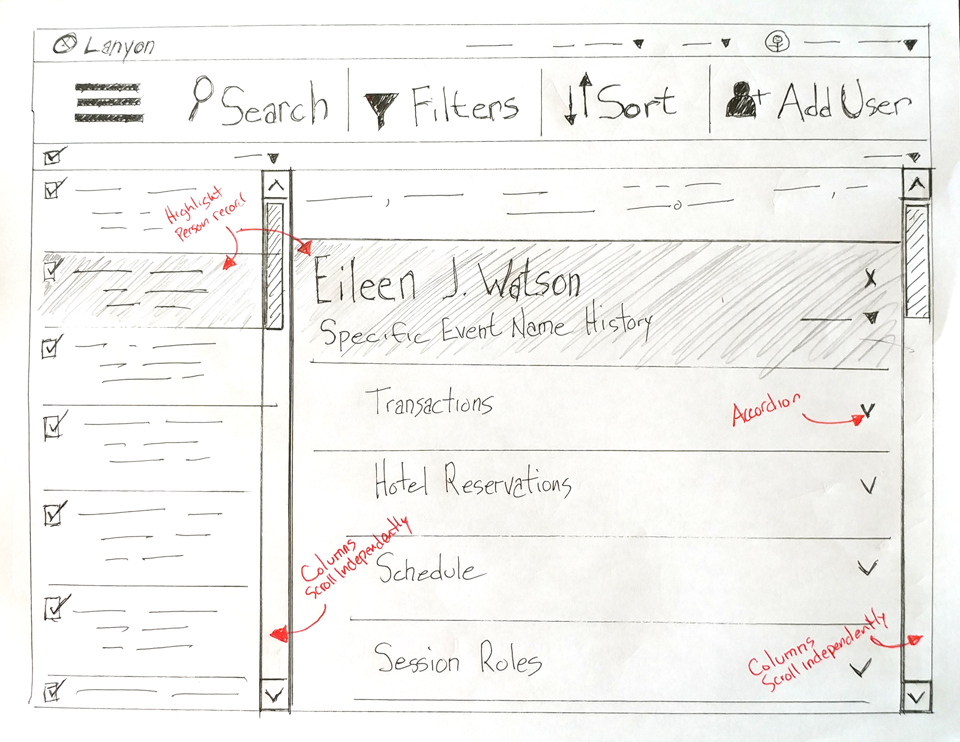
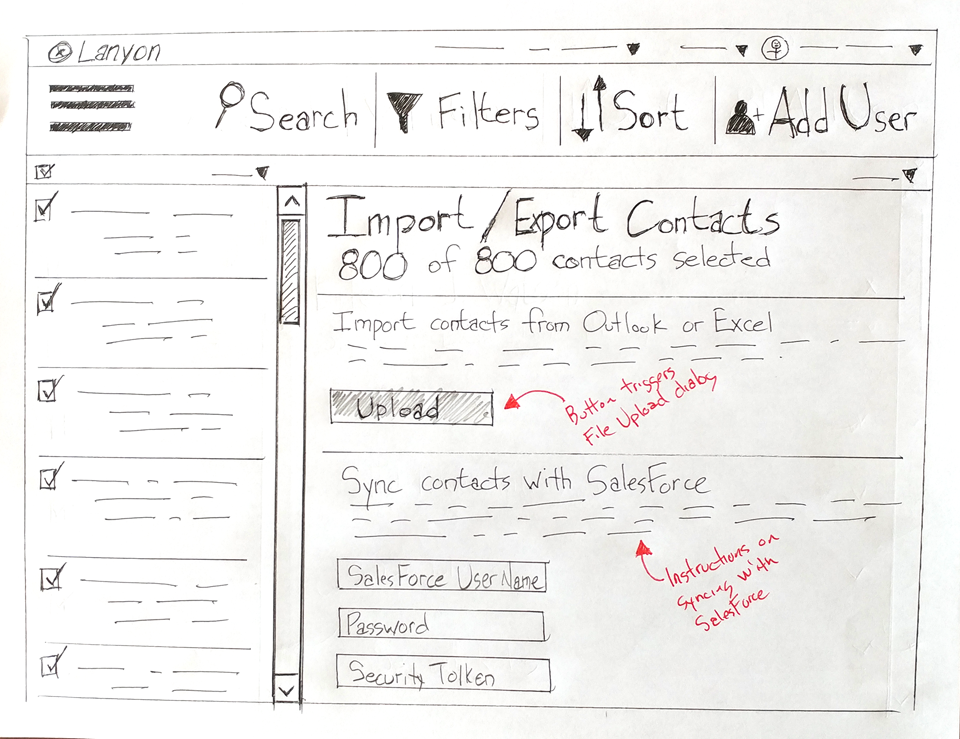
Wireframes
Wireframes help conceptualize user journeys and process flows.
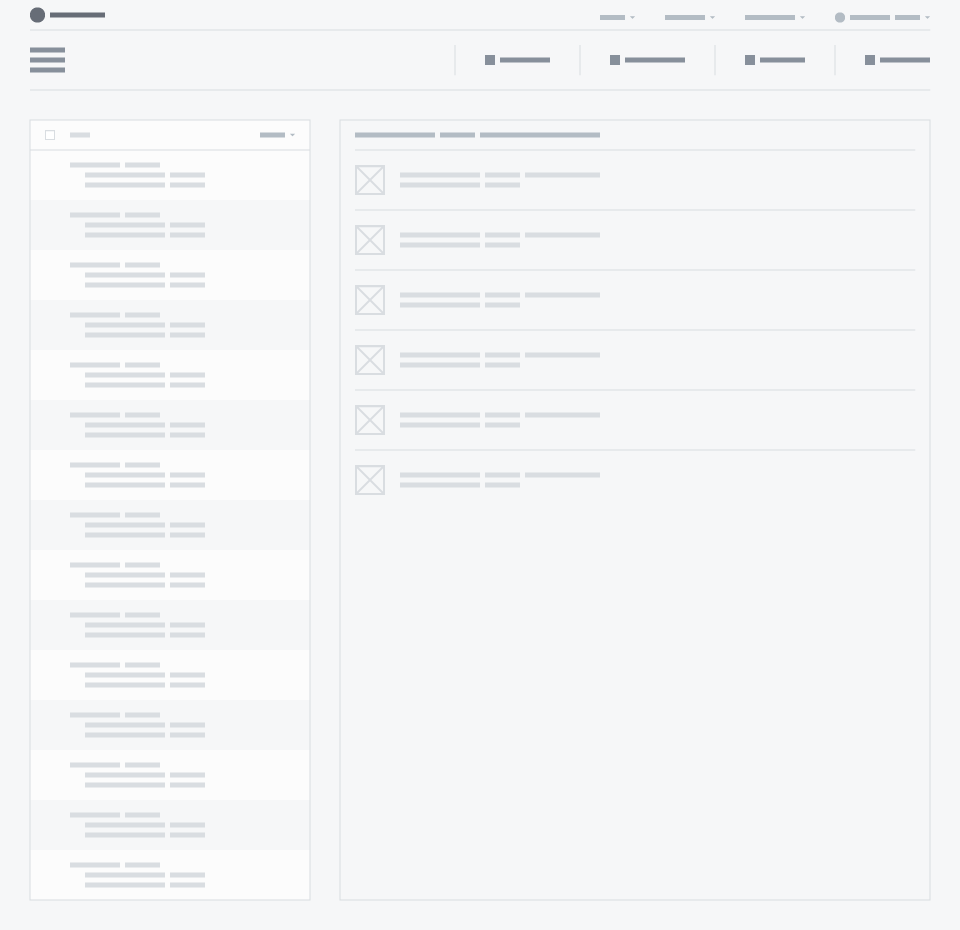
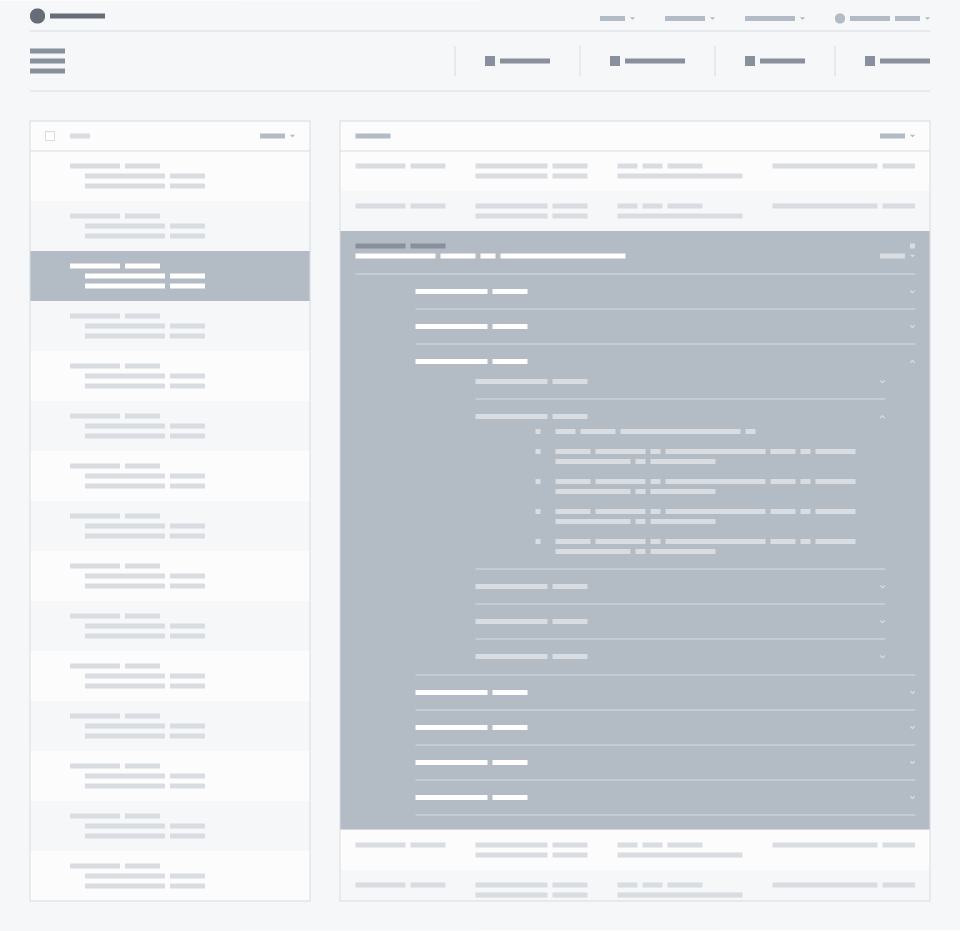
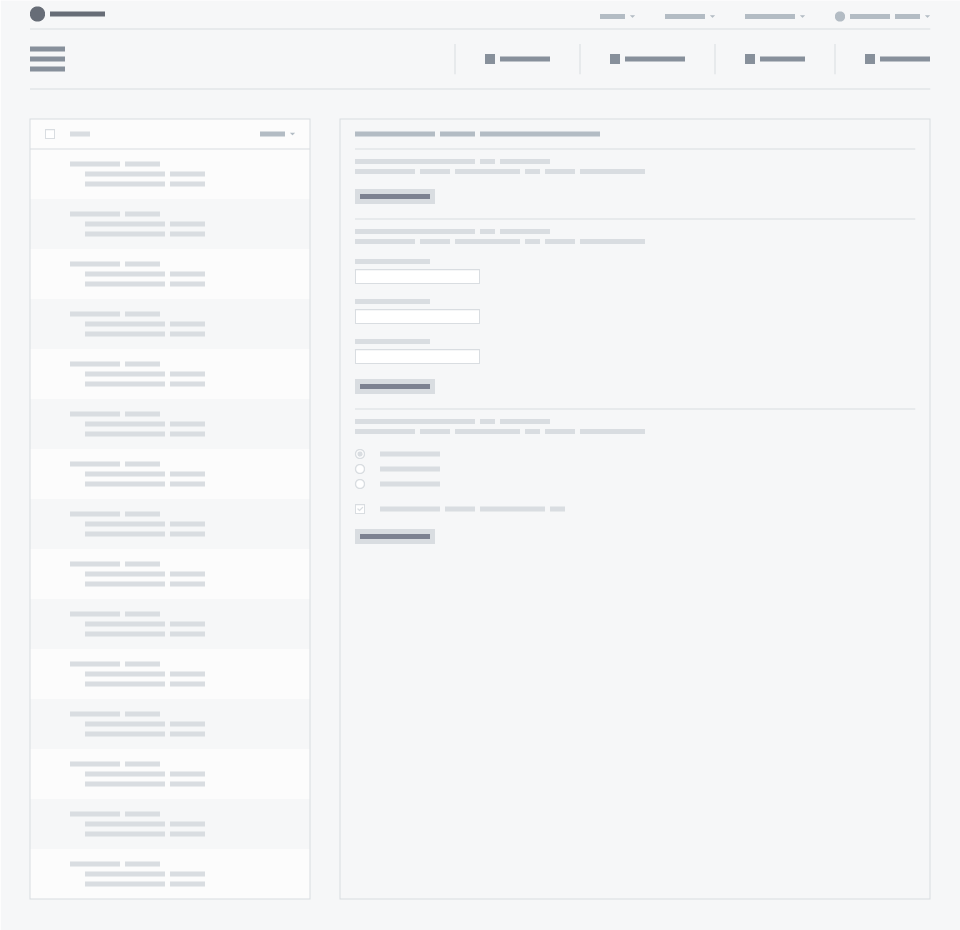
User Flows & Journeys
User flows and journeys need to take into account multiple event planner user-types, each with different goals and different ways of using the CRM system.
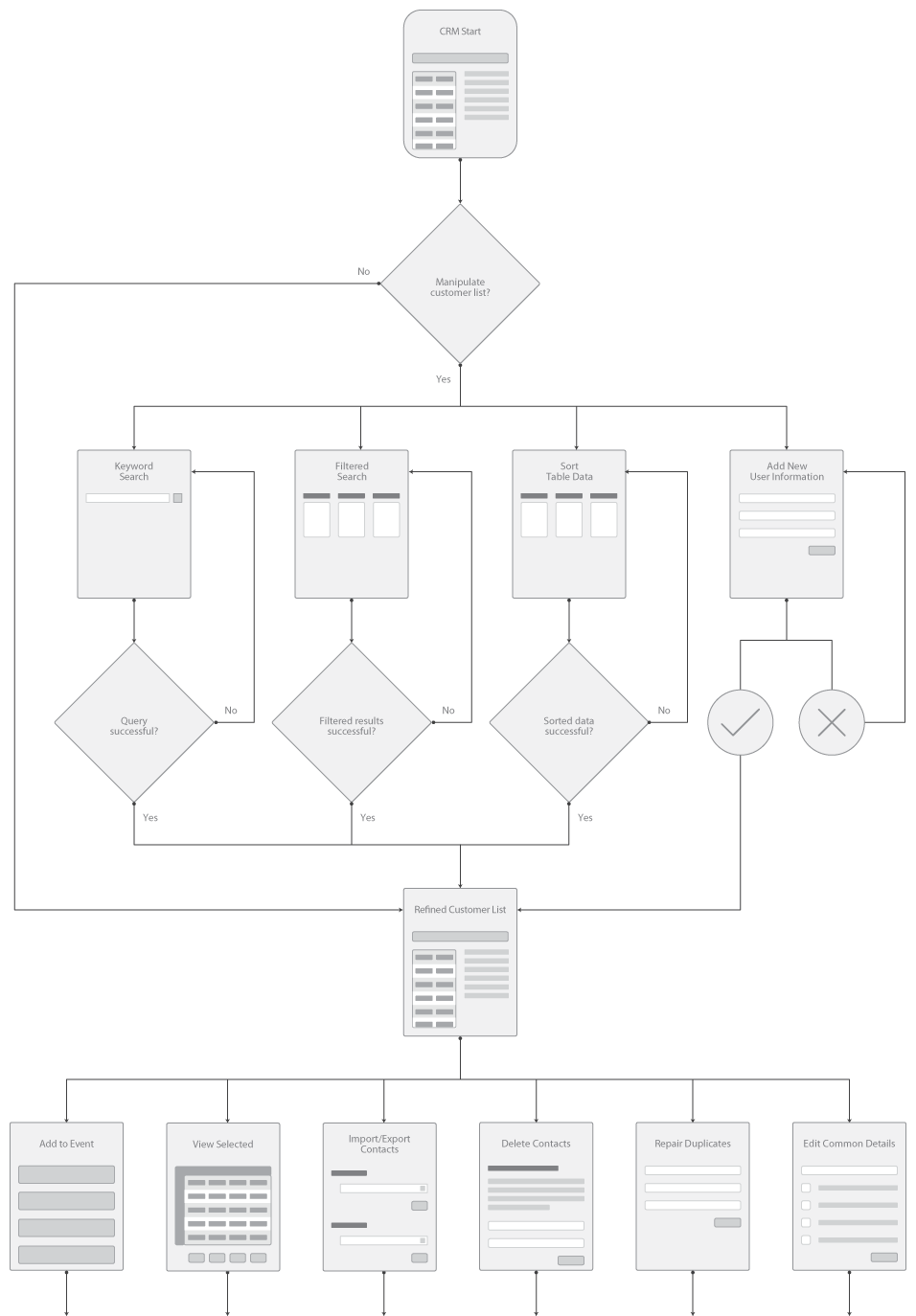
Final Designs
A robust, integrated, intuitive, research-backed CRM design.
